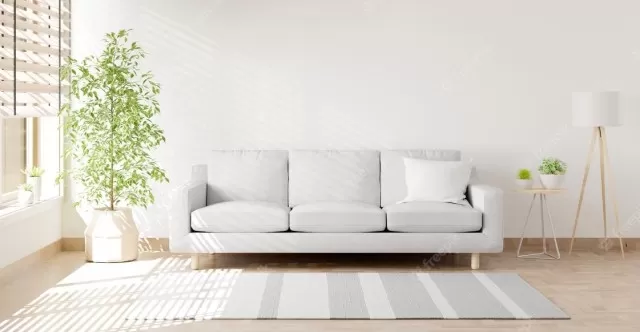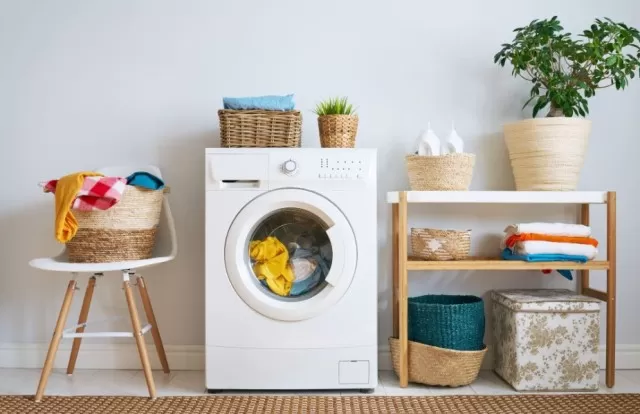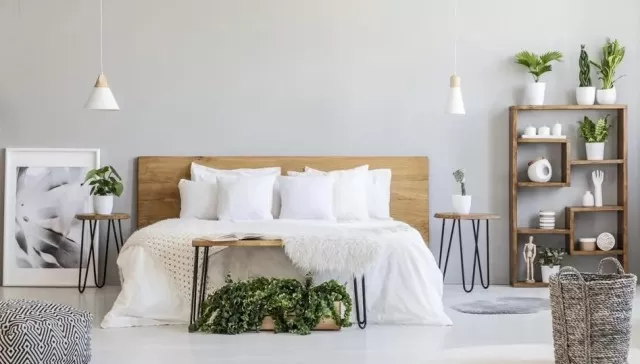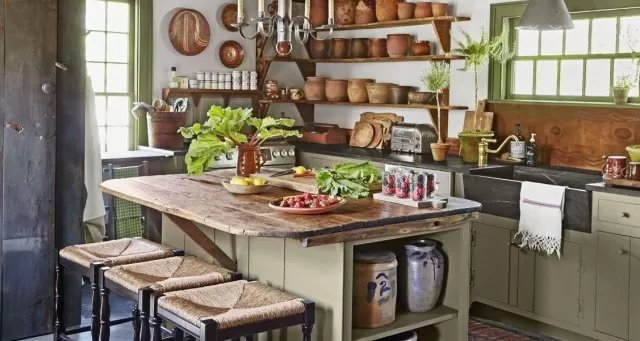If you ever find yourself feeling overwhelmed by the numerous choices in the cleaning supplies section, we have a solution for you.
There is a product that you probably already have in your possession that can effectively clean nearly every surface in your home: distilled white vinegar! While it may not have the pleasant lemony fragrance that other products offer, cleaning with vinegar is highly versatile and cost-effective.
This natural cleaner is capable of easily removing mildew, bacteria, and grime, and it can be safely used on various surfaces in your household.
Take a look at our cleaning tips below to discover how you can utilize vinegar to clean your bathroom, kitchen, living room, and more.
Cleaning everyday objects with vinegar

Cleaning everyday objects with vinegar is an affordable and environmentally friendly option.
Here are some ways you can use vinegar to clean various objects:
Air freshener:
Create a natural air freshener by adding 1/2 teaspoon of vinegar to a 4-ounce spray bottle.
Fill the bottle with distilled water and add a few drops of your favorite essential oil for a pleasant scent.
Window cleaner:
In a 32-ounce spray bottle, mix 1/4 cup rubbing alcohol and 1/3 cup vinegar, then fill the rest with water.
Spray this solution on a lint-free cloth and use it to clean your windows.
All-purpose cleaner:
Make a versatile all-purpose cleaner by combining one cup of vinegar, two teaspoons of borax, four cups of hot water, five drops of liquid dish soap, 10 drops of tea tree oil, and 10 drops of your preferred essential oil (optional).
This cleaner can be used on various surfaces around your home.
Disinfectant:
During cold and flu season, prepare a 50-50 mix of vinegar and water to wipe down commonly touched objects such as phones, doorknobs, and faucet handles.
This solution can help kill germs and disinfect these surfaces.
By using vinegar in these homemade Cleaning Solutions, you can effectively clean everyday objects while avoiding harsh chemicals and saving money.
Clean Floors with Vinegar

To effectively clean different types of floors using vinegar, consider the following methods:
Carpet odor and dust mite remover:
Create a mixture by combining a few drops of your favorite essential oil with distilled white vinegar in a spray bottle.
Lightly spritz the mixture throughout the carpet, focusing on areas that need odor removal or where dust mites may be present. It’s recommended to test the mixture in an inconspicuous spot first to ensure colorfastness.
Carpet rinse:
After shampooing your carpet, rinse it with a solution of 1/2 cup vinegar per gallon of water.
This helps remove any soap residue that can attract dirt, keeping your carpets cleaner for longer. Use a carpet cleaning machine or a mop to apply the vinegar solution and thoroughly rinse the carpet.
Carpet pet odor remover:
To eliminate pet odors from carpets, dampen the affected spot with vinegar and sprinkle baking soda over it.
Work the vinegar and baking soda together using a brush or your fingers. Allow the area to dry ideally overnight, and then vacuum up the dried baking soda.
Wood floor wash:
Mix 1/2 cup vinegar with a gallon of water for wood and laminated floors.
Use this solution to mop and clean the floors. Avoid excessive moisture and ensure you wring out the mop or cloth well before applying it to the wood or laminated surface.
Cleaning floors with vinegar offers a natural and chemical-free approach to removing dirt, odors, and grime.
It’s important to note that while vinegar is safe for many types of floors, it’s always a good idea to test it in an inconspicuous area first to ensure compatibility with your specific flooring material.
Clean Living Room & dining room with Vinegar

To clean your living room and dining room effectively using vinegar, consider the following tips:
Glass surfaces:
Create a 50-50 solution of vinegar and water to clean and maintain the sparkle of glass tables or cabinet doors.
Simply spray the solution onto the glass and wipe it clean with a lint-free cloth.
Wood furniture:
For cleaning and conditioning wood furniture, mix 1/4 cup of white vinegar with one cup of olive oil.
Optionally, you can add a few drops of lemon or orange oil for a pleasant scent. Apply the mixture to a soft cloth and gently wipe the wood furniture, ensuring even coverage.
This will help remove dirt and grime while nourishing the wood.
Area rugs:
To tackle carpet stains and clean area rugs, create a vinegar-cleaning solution.
Mix one teaspoon of mild dishwashing liquid with 1/4 teaspoon white vinegar and one quart of warm water. Apply the solution to the stained area of the carpet or the surface of the area rug.
Let it sit for about 10 minutes, allowing the solution to penetrate and break down the stain. Blot the area with a clean cloth or sponge to remove the stain.
Rinse with water and blot dry.
Using vinegar to clean your living room and dining room can effectively tackle various surfaces, from glass to wood furniture and carpets.
It’s a natural and versatile cleaning solution that can help you maintain a clean and fresh environment in these areas of your home.
Clean laundry room with Vinegar

Using vinegar in your laundry routine can provide several benefits.
Here’s how you can incorporate vinegar into your laundry:
Detergent booster:
Vinegar can be used as a detergent booster to protect colors and remove excess detergent residue.
When washing colored towels and clothing, use approximately half the recommended amount of detergent and add 1/2 to one cup of white vinegar. This helps set the colors and reduces the risk of fading.
Fabric softener:
Instead of using traditional fabric softeners, you can use vinegar as a natural alternative.
Add a cup of vinegar to the final wash or rinse water to soften clothes and eliminate static. Not only is vinegar more cost-effective, but it also provides the same softening effect.
By utilizing vinegar in your laundry routine, you can maintain the quality of your clothes while reducing the use of harsh chemicals and minimizing potential fading or static cling issues.
Clean Bedroom with Vinegar

Disinfecting your mattress with vinegar can be a beneficial step in keeping your bedroom clean.
Here’s how you can use vinegar to clean your mattress:
Mattress disinfectant:
Create a solution by mixing distilled white vinegar, a small amount of rubbing alcohol, and a few drops of tea tree oil in a spray bottle.
Lightly spritz the mixture onto your mattress to help combat dust mites, mildew, and odors. For a more thorough cleaning, follow up with a dusting of baking soda.
Allow the mattress to dry completely, then vacuum the surface to remove any residue.
Using this vinegar-based solution can help freshen up your mattress and reduce the presence of allergens and unwanted odors.
Clean Bathroom with Vinegar

When it comes to cleaning your bathroom, distilled white vinegar can be a powerful and natural solution.
Here are some top uses for vinegar in bathroom cleaning:
General bathroom cleaning:
Use undiluted vinegar or a diluted vinegar solution to effectively scrub away bacteria, especially in areas around the toilet where urine stains and odor can occur.
Toilet:
For toilet cleaning, pour a cup of vinegar into the bowl and let it sit overnight.
For tougher stains, empty the toilet water first. The next day, sprinkle baking soda or borax powder, scrub the toilet, and then flush.
Tub or sink drain:
To clean the area around your bathroom drain, pour 1/2 cup of distilled white vinegar around the closed drain and let it sit for several hours.
Scrub to remove buildup, then drain and rinse.
Shower:
Deep clean your shower with vinegar by bringing it to a boil.
Carefully use the warm vinegar to wipe down the shower door and walls. Keep them damp by wiping them down every five to eight minutes for 30 minutes.
Then, dampen a non-scratch sponge with vinegar, sprinkle it with baking soda, and scrub. Rinse to wash away germs, mold, water spots, and soap scum.
Showerhead:
Cleaning a showerhead with vinegar is simple.
Pour white vinegar into a plastic bag and secure it to the showerhead with a twist tie or rubber band. Ensure that the bottom part of the showerhead is submerged in vinegar.
Leave the bag on overnight and remove it the next day before showering.
Tile surfaces:
Create a solution by mixing 1/2 cup of white distilled vinegar with a gallon of warm water.
Use this mixture to mop bathroom floors or scrub countertops, allowing them to air dry.
Using vinegar for bathroom cleaning is an effective, affordable, and natural option.
It can help tackle bacteria, stains, and buildup on various bathroom surfaces.
Clean the Kitchen with Vinegar

When it comes to cleaning the kitchen, vinegar can be a safe and effective alternative to harsh chemicals.
Here are some tips on using distilled white vinegar for various kitchen cleaning tasks:
Refrigerator:
Instead of using toxic chemicals near your food, try Cleaning Refrigerator surfaces with a vinegar solution.
Dampen a cloth with a mixture of equal parts vinegar and water, and use it to wipe up spills. You can even keep a bottle of this solution stored in your fridge for convenience.
Drain:
For freshening up your drain and removing odors and grime, pour vinegar onto a small scrub brush and sprinkle it with baking soda.
Use the brush to scrub inside the disposal.
Cutting boards:
Use white vinegar to clean the cutting boards.
Spray the surface with undiluted vinegar, then rinse to effectively clean and disinfect.
Microwave:
To tackle tough splatters and stains in the microwave, place a glass bowl containing 1/2 cup vinegar and 1/2 cup water inside.
Microwave the mixture for two to three minutes until it boils, then easily wipe away the buildup.
Stained plastic containers:
Coat plastic containers with vinegar, let them sit for a few minutes, and then wash them as usual.
The vinegar helps remove stains and odors.
Countertops:
For most kitchen countertops, you can simply spray vinegar onto the surface and wipe it away with a warm, damp cloth.
However, it’s important to note that vinegar should be avoided on granite or marble surfaces as it may cause damage.
Using vinegar as a natural cleaner in the kitchen can be a cost-effective and versatile option.
Just be mindful of the surfaces you are cleaning to ensure vinegar is safe to use.
*The information is for reference only.